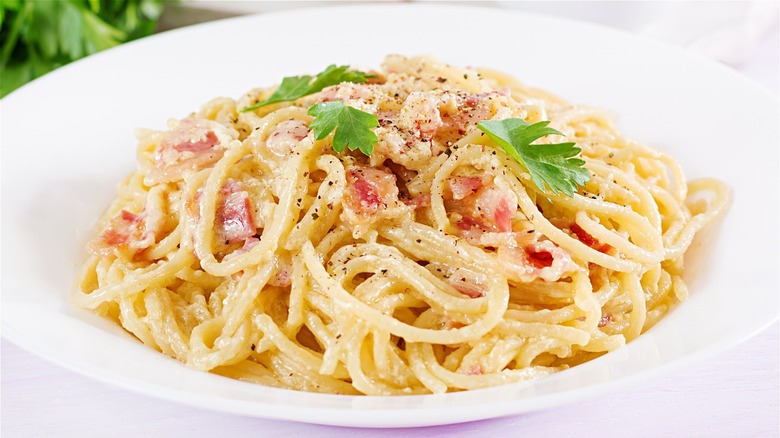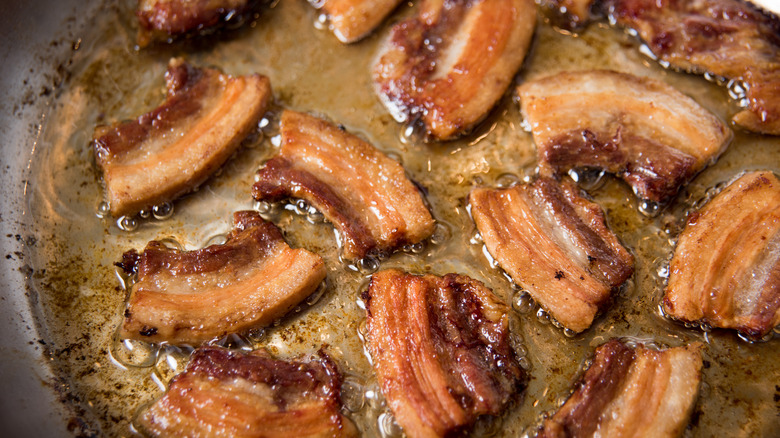The Ingredient Swap That's A Mistake On Carbonara Night
Italian cuisine is very simple. Recipes highlight a handful of ingredients of the highest quality, and cooking is very seasonal. The Italian culture prioritizes food and dedicates more of its income to cooking and eating than other European countries. Meals are long and leisurely and are meant to be enjoyed with family and friends (per The Guardian).
Italian food is most associated with pasta. Although Italians eat it daily, portion sizes are half what is served in the U.S., where pasta is usually the main course. While American plates are typically divided into proteins, veggies, and starches, Italians eat in courses. The first course is an antipasto consisting of cured meats, cheeses, and bread (think charcuterie boards), followed by the primo or first course. This is when Italians will have a small portion of pasta or risotto. Secondo or second courses contain a protein followed by a vegetable or contorno (per LA Times).
Some of the most delicious pasta dishes are just a handful of ingredients. Marcella Hazan's tomato sauce uses four ingredients, high-quality San Marzano tomatoes, butter, onion, and salt. Cacio e pepe is just cheese and pepper. Simple and delicious, there's no room to mask subpar ingredients. Carbonara is another simple recipe that allows each ingredient to shine. Made with eggs, pecorino Romano cheese, pork belly, and black pepper, carbonara is a creamy, umami-rich dish that is unbelievably delicious. While we all need to make adjustments occasionally when cooking, some swaps are better than others.
Avoid substituting with bacon
Although simple to make, carbonara recipes are all about technique and timing. This is not a saucy type of dish. Raw eggs, crispy bits of pork belly, and grated cheese are combined with starchy pasta water to create an emulsion that coats each strand of pasta. Although carbonara is creamy and luxurious, the cream is not added. Traditionally spaghetti is used, but any long-strand pasta would work (per MasterClass).
According to All Recipes, pork belly comes from the underside and fattiest part of the pig and is one of the four primal cuts. The meat is salt-cured to make some of the most popular cuts in cooking, bacon, pancetta, and salt pork. Bacon sets itself apart since the meat is enjoyed on its own, and it is injected with salt and sugar and then smoked to give it its distinctive flavor and addictive qualities (per Food Network).
Pork belly cuts are prized for their fat content, which, when rendered, is used to flavor dishes like carbonara. Bacon is often substituted for pork belly in carbonara sauce since its readily found in grocery stores. While the two types of meat are cut from the same region, bacon has a strong flavor profile from its time in the smokehouse which can overpower the dish. Pancetta and guanciale are more suitable substitutions if pork belly isn't available. They are cured but not smoked, so the other ingredients in carbonara are still tasted (per Thrillist).

